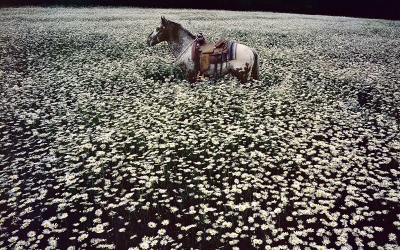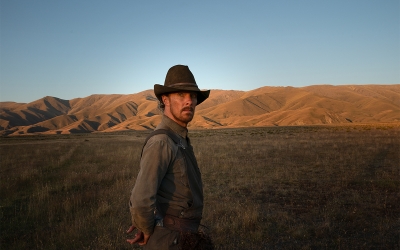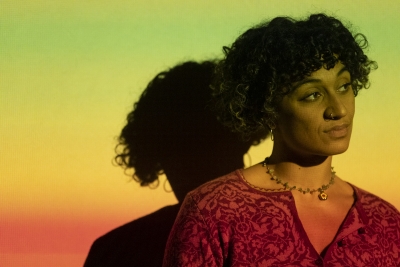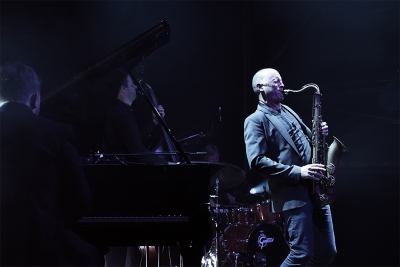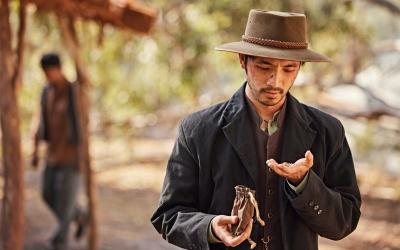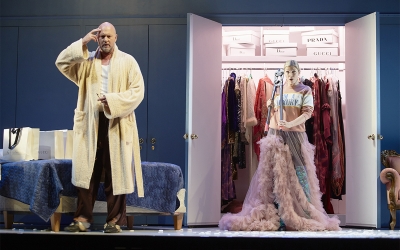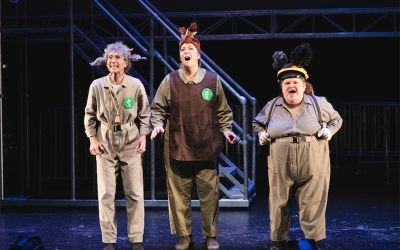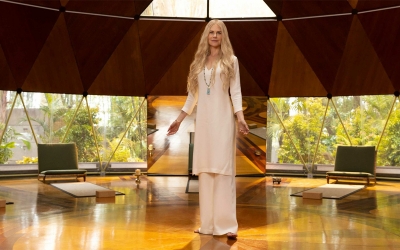Recent reviews
Film | Theatre | Art | Opera | Music | Television | Festivals
Welcome to ABR Arts, home to some of Australia's best arts journalism. We review film, theatre, opera, music, television, art exhibitions – and more. To read ABR Arts articles in full, subscribe to ABR or take out an ABR Arts subscription. Both packages give full access to our arts reviews the moment they are published online and to our extensive arts archive.
Meanwhile, the ABR Arts e-newsletter, published every second Tuesday, will keep you up-to-date as to our recent arts reviews.
Recent reviews
As the author of Rock Chicks: The hottest female rockers from the 1960s to now (2011), I was excited to plunge back into the world of rock and roll to review the Linda McCartney retrospective that is currently showing at the Art Gallery of Ballarat. I’ve also written about Paul McCartney and John Lennon, so am quite familiar with these lads from Liverpool.
... (read more)After eighteen months of wayward blockbusters and couch-ready, pandemical streaming entertainment, Jane Campion’s The Power of the Dog arrives like a stiff shot of pure cinema. Adapted from Thomas Savage’s 1967 book of the same name, Campion’s film offers no quick thrills, no easy answers, no simple heroes, and no mercy for its inhabitants. It’s a rare beast in an industry increasingly split between shoestring-budget genre films and $200 million franchise toppers; a quintessential adult drama.
... (read more)On the evening of Wednesday, 16 October 1991, after the annual Valedictory Dinner at Melbourne University’s august Ormond College, the Master allegedly made unprovoked sexual advances to two female students. These incidents lead to a scandal which rocked the Melbourne establishment, caused the exit of the Master, and became the basis of Helen Garner’s hugely controversial exploration of sexual politics, class, and power, The First Stone (1995).
... (read more)In 1961, Ornette Coleman was scheduled to play in Cincinnati. According to one story, the concert turned into a near-riot after patrons refused to pay, having observed the marquee out front billing the performance as ‘Free Jazz’. Whether apocryphal or not, it goes to the heart of the long-running confusion about jazz terminology. Free jazz, of course, refers to the experimental or avant-garde work of innovators, like Coleman, who rebelled against the conventions of bebop, hard bop, and modal jazz.
... (read more)Prior to watching New Gold Mountain, the only account I had come across of the gold rush of the 1850s from a non-white perspective was in Monica Tan’s memoir, Stranger Country (2019). On a six-month road trip around Australia, Tan met Eddie Ah Toy, an elderly, fifth-generation Chinese-Australian man whose ancestors came to Australia to work on the goldfields. Recently for SBS, Tan wrote, ‘I belong to a new wave of Chinese-Australian creatives who are patiently sifting through the footnotes of Australian history and carrying on the restoration and revival work of those that came before us. Only time will tell if our work repositions the experiences of our community as central to Australia’s origin story.’
... (read more)This splendid exhibition is named for Doug Aitken’s three-channel video NEW ERA (2018), which revisits Martin Cooper, the elderly American inventor of the mobile telephone and his first call on the device in 1973. The video is set in a mirrored hexagonal room at the Museum of Contemporary Art in Sydney, its multiplying reflections fracturing and confounding place and time, wrapping around visitors. The work neatly encapsulates American artist Doug Aitken’s interests: how do humans and their technologies sit in the natural world? Importantly, how do we use these technologies to see the world we live in, to make it meaningful? The idea recurs throughout Aitken’s art and writings; it is manifested in the mirrors that incorporate us in his works.
... (read more)The Marriage of Figaro is one of my favourite operas. So imagine my delight at being offered a complimentary ticket by my friend and colleague Humphrey Bower to the opening night of a new production by Opera Queensland presented by the West Australian Opera at His Majesty’s Theatre in Perth, as well as being granted the opportunity to step into Humphrey’s shoes and review the production. Fortunately, our feet are of similar size, although I needed to remove his orthotics and insert my own before making my way to the theatre.
... (read more)The birds are twittering and tweeting (all puns intended) on Manor Farm. Industrial scaffolding leads up to a platform that cuts the minimalist set in two. The same metal barriers that are used to corral the crowds waiting for Covid-19 vaccinations criss-cross the floor of the stage. ‘Breaking News’ flashes across the cinema-sized screen that looms over what will soon be renamed ‘Animal Farm’.
... (read more)Picture this: a taut, ninety-minute thriller featuring some of Hollywood’s biggest names, based on a bestseller from a literary big-hitter. A slow-burn mystery about a group of wealthy strangers, each with their own dark secrets and buried traumas, arriving at a boutique wellness spa for a ten-day retreat. Nicole Kidman starring as the enigmatic, ethereal Russian wellness guru Masha Dmitrichenko, who has specifically chosen these guests to carry out a series of risky experiments involving cutting-edge psychotherapy and mind-altering drugs. An hour and a half of rich character drama and suspense that builds to an intriguing philosophical twist. Now imagine that same story, stretched well beyond the longevity of its initial premise to a bloated eight-hour runtime, robbing it of coherent structure and narrative tension. An unwieldy hydra of tone and storytelling style. An exasperating parade of superficial soul-baring and perfunctory plot table-setting, leaving its exceptional cast treading water week in, week out. There you have Hulu’s recently concluded Nine Perfect Strangers, a show that epitomises the era of Peak TV while simultaneously embodying a compelling argument against it.
... (read more)Dean Gibson, a Guugu Yimithirr man, is the writer and director of Incarceration Nation, one of the latest documentaries on SBS On Demand. It’s worth noting this because Incarceration Nation, for those who believe this country was ‘settled’ and is equal for all, is essential viewing. Gibson says that ‘Australia was founded by the English with one clear purpose: to create a prison island. More than two hundred years later, not much has changed.’ It’s a strong statement. Having written about this before, I would take it one step further and say that Australia was founded to create not a prison, but an economy.
... (read more)

